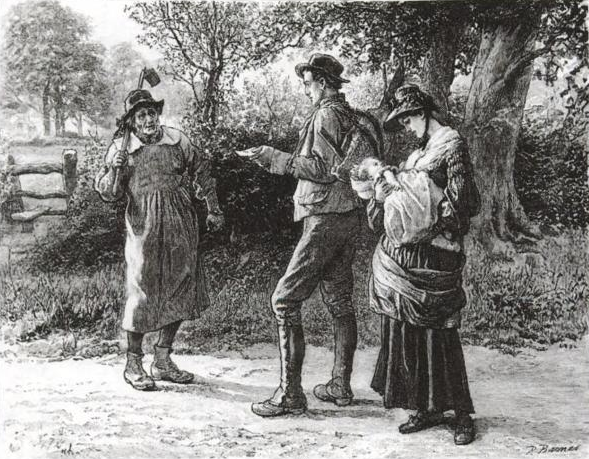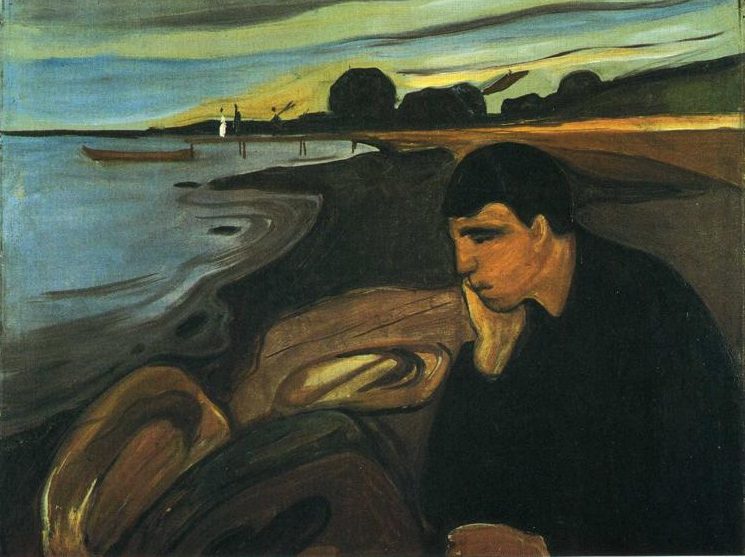Home » Posts tagged 'England'
Tag Archives: England
The History of Mr. Polly
H. G. Wells
1910
(A man of precisely 37.5 years of age can’t seem to find success or happiness in life… perhaps he has to do something drastic.)

“HOLE!” said Mr. Polly, and then for a change, and with greatly increased emphasis: “ ‘Ole!” He paused, and then broke out with one of his private and peculiar idioms. “Oh! Beastly Silly Wheeze of a Hole!”
Thus begins an entertaining fictional biography of a man who really needs a whack upside the head– one of several greats in that odd subgenre– Tom Jones, Babbitt, and Updike’s Rabbit series, for examples. (H. G. Wells writing fictional biography? In a contemporary setting? This might surprise those of us, such as myself, who had equated him with science fiction and socialist nonfiction. But anyway…) Our protagonist is an endearing and vivid, if frustrating character, who hides his depression with funny one-liners and his poor education with deliberate mispronunciations. And, as with many colorful characters in real life, beneath the wit cowers a man who hasn’t a clue where he’s going. His path through life is that of a flat boat with untethered sails– he might as easily plummet to his death over a waterfall as drift into a homely port. Or, to use Alfred Polly’s own metaphor, he’s in a hole. And no amount of quaint phrasing and amusing epithet, no ability to make women giggle, and no success as a shopkeeper is going to hoist him out of it.
The Hound of the Baskervilles
Arthur Conan Doyle
1902
(The scientific minds of Holmes and Watson are tested by howls on the moor, the legend of a fiery hell-hound, and a giant pawprint next to a dead nobleman.)

A novel-length Sherlock Holmes mystery! The readers of the Strand Magazine must have been delighted. They must have vigorously discussed with each other the prospects of the case between installments. Releasing a detective story by degrees has got to be risky, since the readers have so much time to figure everything out. There are enough threads interwoven in this story, though, and enough minor details that must be incorporated into a solution, that I suspect almost everyone will be surprised at something in the denouement. Besides, we would need a healthy dose of luck to solve the riddle ourselves, for there are crucial elements about which we can only guess during the narration. These are revealed to us only after Holmes has discovered them and solved the case in his mind. In this way, Doyle all but ensures that competition with the sleuth is beyond our grasp.
Although the most haunting aspect of the typical Sherlock Holmes case is nothing more than the dense fog of pipe smoke around the detective’s chair, Doyle did have an interest in spiritualism, and wrote a few books on the subject. In The Hound of the Baskervilles he combines these two interests by infusing the tale with a strong atmosphere of macabre otherworldliness. Probably more than the facts of the case or its solution, the damp darkness and chilling moans of the moor are likely to remain with us long after we have finished reading the book.
The Mayor of Casterbridge
Thomas Hardy
1886
(The fortunes of a strong-willed hay-trusser prove to be as volatile as he is.)

Michael Henchard is an unemployed field laborer who, under the influence of rum at a fair, impulsively starts to auction off his wife and baby daughter, to much laughter. His wife stands. A hush falls as a sailor actually puts five guineas on the table.
“Now,” said the woman, breaking the silence, so that her low dry voice sounded quite loud, “before you go further, Michael, listen to me. If you touch that money, I and this girl go with the man. Mind, it is a joke no longer.”
But Henchard will not be shamed or threatened. When he says something he means it! And so minutes later he sits there blinking away his disbelief as Susan, with little Elizabeth-Jane, walks away with a stranger. Thus begins The Mayor of Casterbridge: The Life and Death of a Man of Character. Here we see how a person’s destiny is shaped by the interaction of external forces and internal qualities– the world and the self. Take one part circumstance, add one part decision, repeat continually towards success or failure.
Arnold’s early poems
Matthew Arnold
1840-1849
(A man of intellect and of spiritual sensitivity contemplates the purpose of life and its struggles.)

“Unwelcome shroud of the forgotten dead,/ Oblivion’s dreary fountain, where art thou”. What a dark way to begin one’s poetical efforts, at 18 years of age! And we need read no further to suspect (correctly) that in Matthew Arnold we are in for something very different from the Romantics, and quite different also from his Victorian contemporaries Browning and Tennyson. The essence of the distinction is in his preoccupation with the meaning of life, and by extension death and the loss of faith. This spiritual decline that disturbed him so much, often called the maladie du siècle or the “sickness of the century”, had been treated more seriously on the continent, while in England Wordsworth, Keats, and Shelley were grasping at Nature or the humanism of the Greeks for their spiritual anchor. Arnold was a more melancholic, more skeptical poet, and doubted that the sickness could ever be cured, although he certainly loved the ancients (many of his early poems have classical subjects), and he also did look to nature for inspiration. Even as a teen he presaged the Existentialists, and indeed much of the spirit of the twentieth century, in trying to devise a way to preserve our spirituality and sense of wonder while being brutally honest about our mortality and the fleeting nature of all human endeavor. Matthew Arnold was a great poet not mainly because he was imaginative, morally sensitive, and wonderstruck, nor on the other hand because he was freethinking, scholarly, and skeptical; he was great because he was somehow both of these sorts of people at once. If his poetry could be said to have a single goal, it was to merge these two halves of his consciousness, the spiritual and the intellectual.



